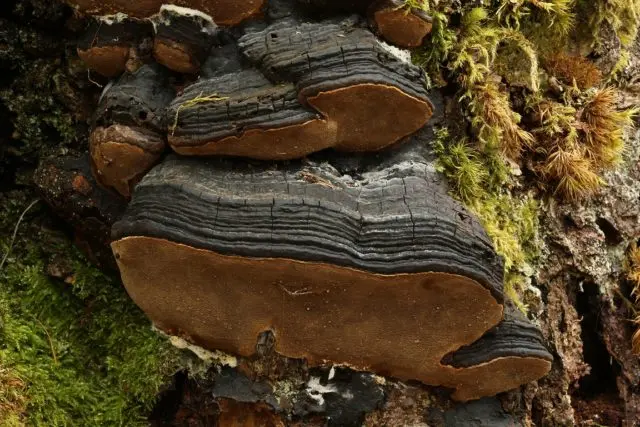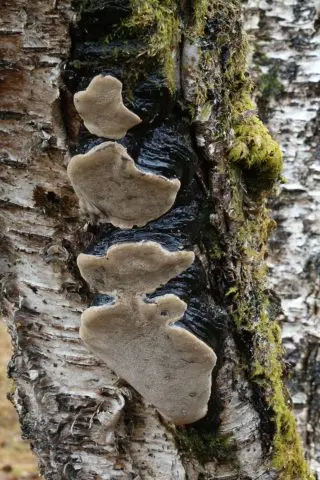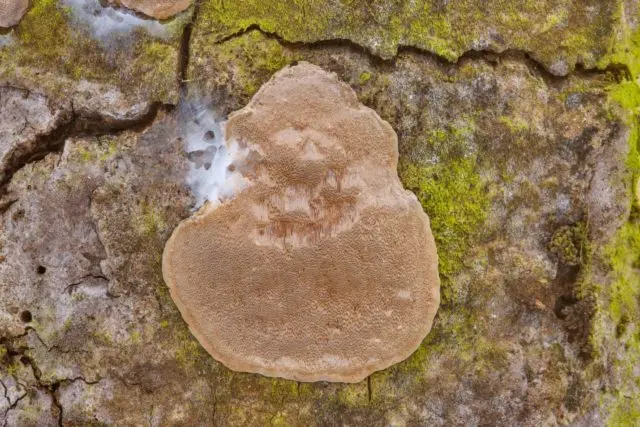Contents
Phellinus, or Lundell’s false tinder fungus, is designated in mycological reference books as Phellinus lundellii. Another name is Ochroporus lundellii. Belongs to the department Basidiomycetes.

The surface of the tinder fungus is dry, with a clear border near the hymenophore
What does Lundell’s false tinder fungus look like?
Fruiting bodies grow in small groups, apart, rarely grow together in parts and only at the base. The average thickness is 15 cm, the width of the hat is 5-6 cm.
External description:
- the upper surface is protected by a dense dry crust with numerous cracks and a rough, bumpy structure;
- the color is black at the base, closer to the edge – dark brown;
- the surface is embossed in the form of protrusions with concentric circles;
- shape prostrate, triangular at the point of attachment to the substrate, sessile, slightly compressed, slightly protruding above the surface;
- the edges of the caps are rounded or slightly wavy with a seal in the form of a roller;
- the hymenophore is smooth, grayish in color with round cells.
The pulp is woody, light brown.

The spore-bearing layer is dense, consists of layered tubules
Where and how to grow
Lundell’s perennial false tinder fungus is distributed throughout the Plain, the main accumulation is mixed forests of Siberia, the Far East, and the Urals. Not found in warm climates. Grows mainly on birch, rarely alder. Exists in symbiosis with living weakened trees or settles on dead wood. A typical mountain taiga representative who cannot stand human economic interference. Prefers wet places with close moss.
Is the mushroom edible or not?
The fibrous solid structure of the fruiting body is not suitable for culinary processing. Mushroom tinder fungus Lundell is inedible.
Twins and their differences
Outwardly, fellinus looks like a flattened tinder fungus. It is an inedible species, widespread in all climatic zones where deciduous trees are found. Not tied to a particular breed. Fruiting bodies are rounded, tightly adjacent to the substrate. Over time, grow together, creating a long shapeless formation. The surface is bumpy, dark chestnut or gray with a steel sheen.

The edges of adult specimens are slightly raised.
Conclusion
Lundell’s false tinder fungus is a fungus with a long life cycle that creates a symbiosis mainly with birch. Distributed in the mountain taiga massifs of Siberia and the Urals. Due to the firm structure of the pulp, it has no nutritional value.









